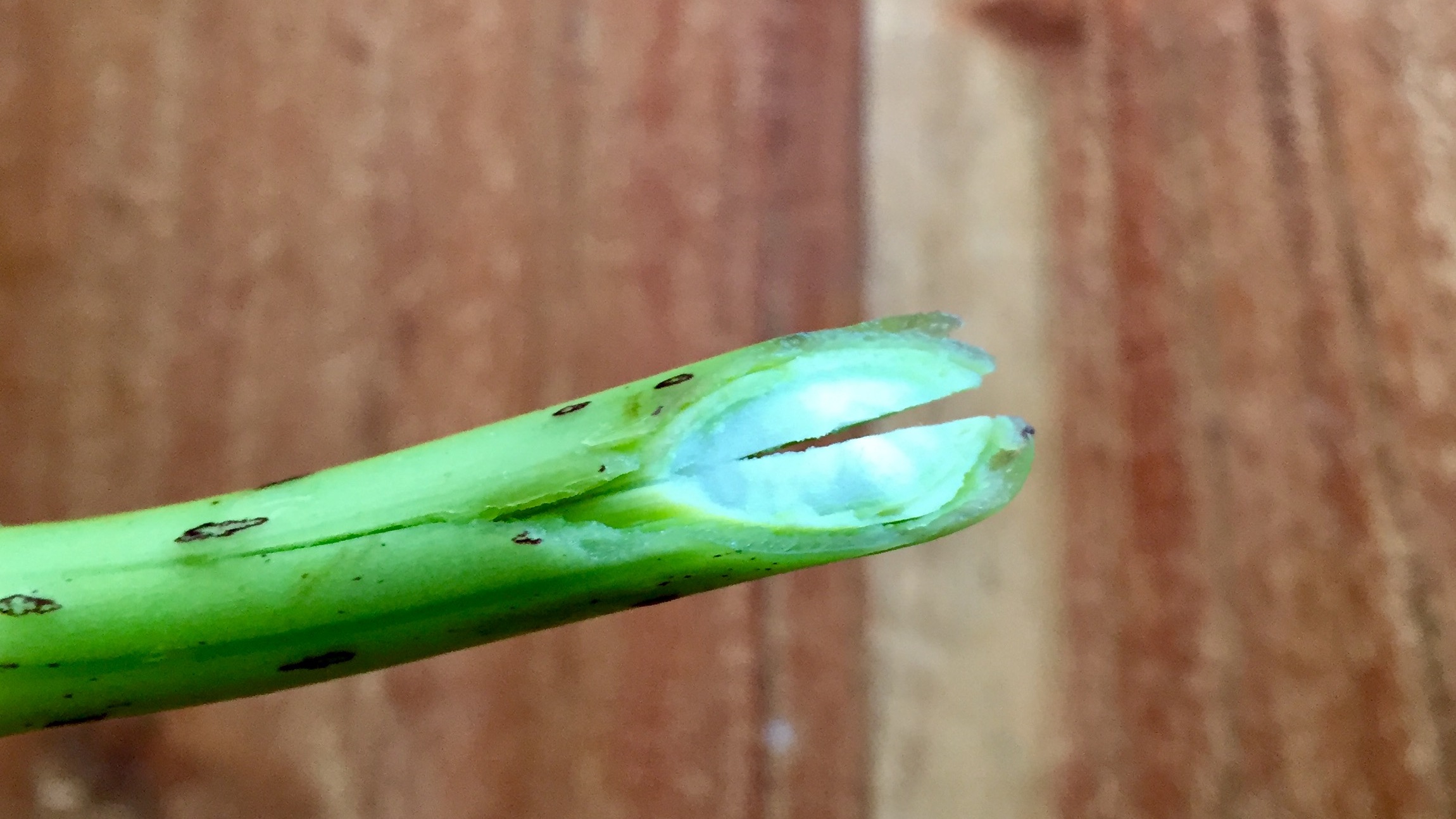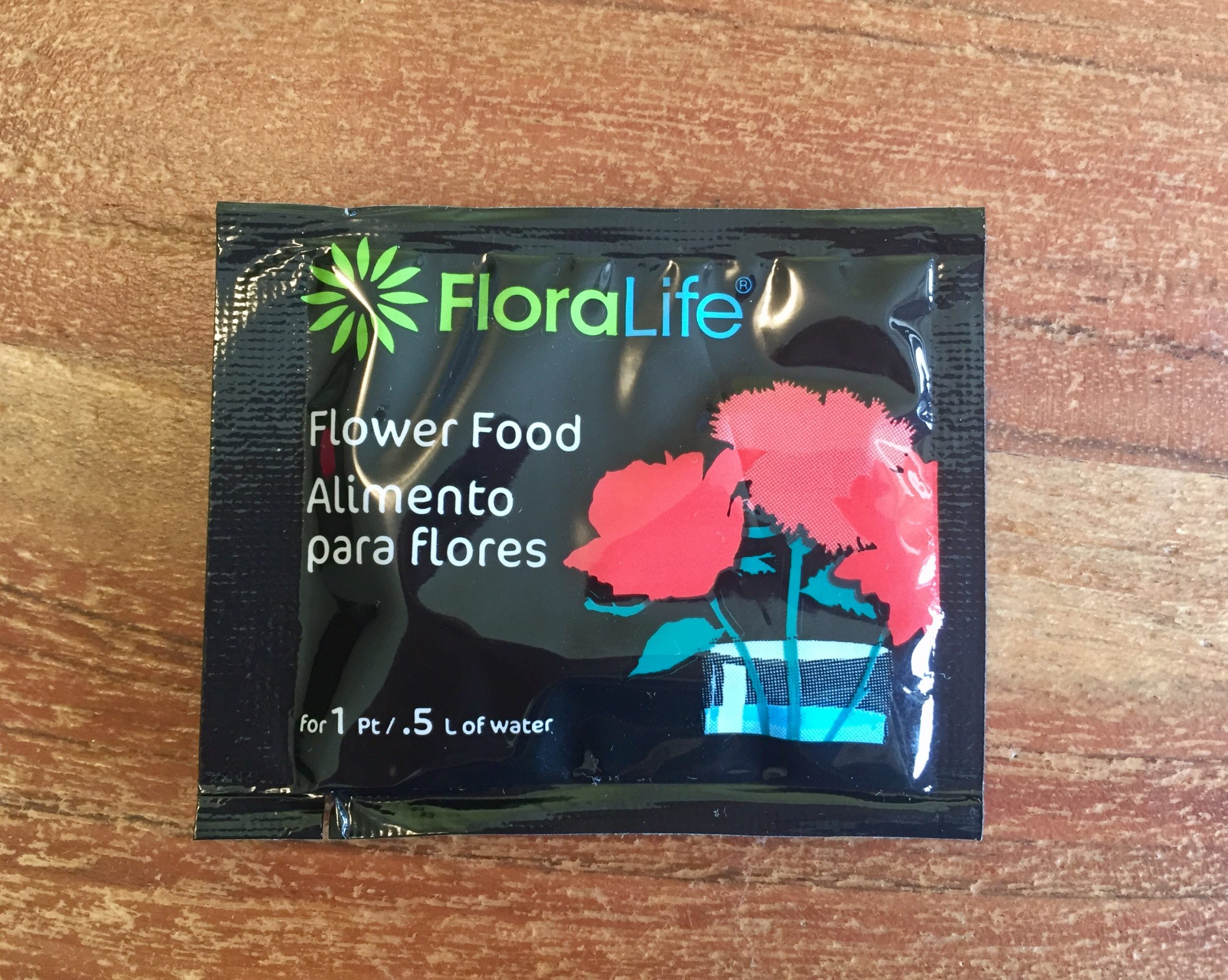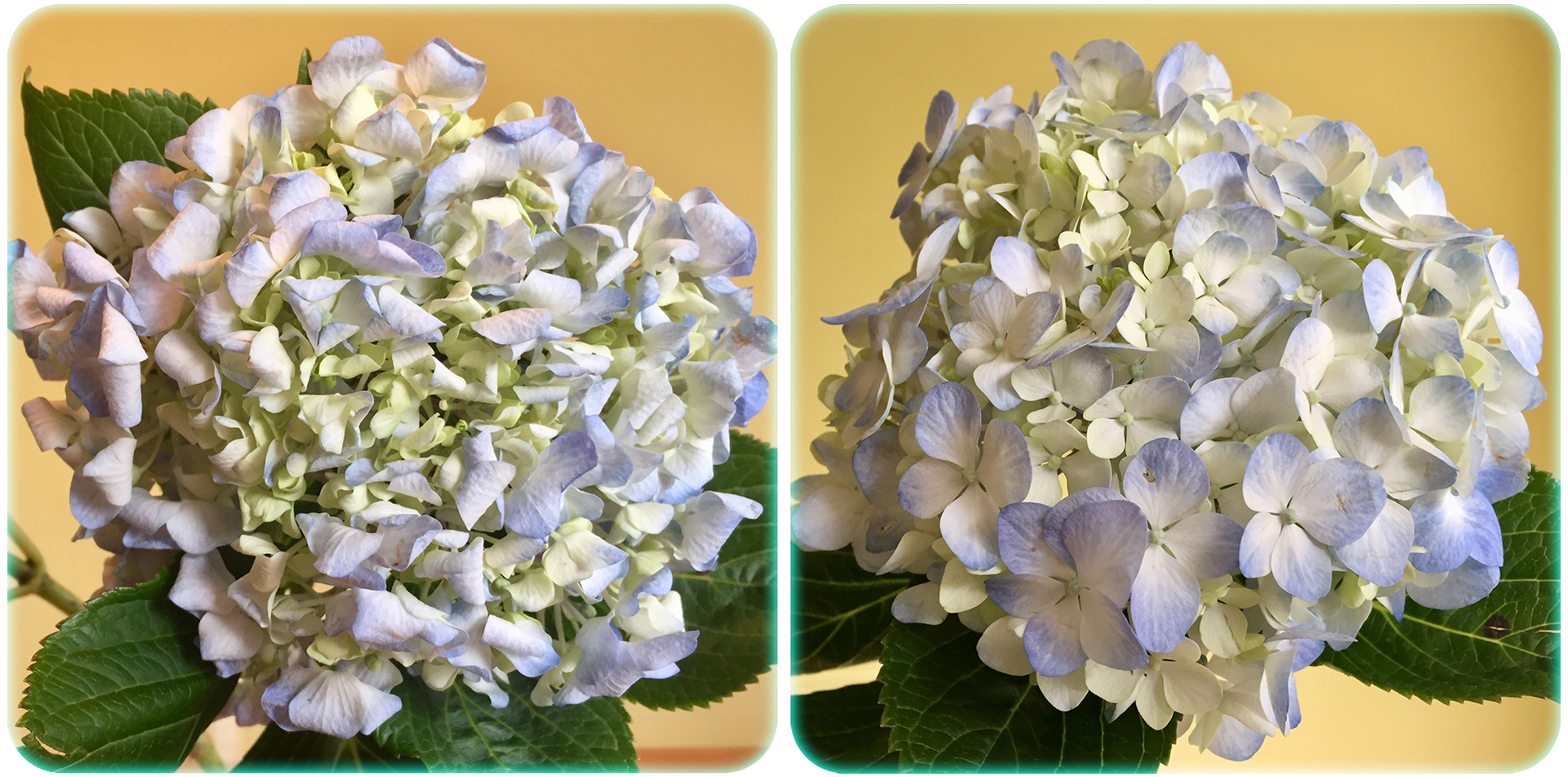You are walking home from work when you pass the loveliest hydrangeas. At $8 for two stems at the local shop they are a steal and impossible to pass up. You bring them home, plunk them in a vase with some water, and forget about them for a couple of hours. The next thing you know, the perfect little blue petals are curling in, the whole thing is drooping, and the perky flowers you bought just hours ago are rapidly dying.
Wilting flowers on the left. The same flowers after being revived on the right. Photo by Olga Oksman/Lifehacker.
[referenced url=”https://www.lifehacker.com.au/2016/11/the-best-flowers-to-grow-for-homemade-bouquets/” thumb=”https://i.kinja-img.com/gawker-media/image/upload/t_ku-large/l4m18ugvy4sz9gpvx9dq.jpg” title=”The Best Flowers To Grow For Homemade Bouquets” excerpt=”Making your own bouquets is an inexpensive way to enjoy beautiful flowers at home or give them as a gift, but you don’t have to visit the florist to have them. Here are the flowers that will grow fast enough in your garden for you to enjoy beautiful, fresh, colourful bouquets all spring and summer.”]
Your Flowers Are Zombies
Well, sort of dying. Whether or not your cut flowers are living or dead is a matter of debate. Since it is not clear which one they are, you can sort of see them as zombies, not really alive, but not dead either. Under the right conditions they can be kept in a sort of zombie state for a week or two, long enough to decorate the coffee table and make you smile.
Flowers wilt for a simple reason: There is not enough water getting to the plant. When newly purchased flowers start to wilt soon after you buy them, chances are water is not able to get into the stems. There are a few simple steps you can take to help the flower drink again and revive. You can’t keep them fresh forever, but if they wilt prematurely, you can bring them back from the brink, no mouth-to-mouth or midnight sacrifices at the cemetery required.
Reanimate Your Blooms
Step 1: Recut the stems. Most often what happens is the bottom of the stem gets dried out and is having a hard time absorbing water. So take a very sharp pair of scissors or knife and cut at an angle, to provide as much surface area as you can for the flower to drink up. This will also allow the flower to stand on point in the vase, helping water enter the stem. To increase the surface area even more, split the stem an inch or two from the bottom with scissors or a knife.

Cut and split stem. Photo credit: Olga Oksman/Lifehacker
Step 2: Use warm water. Another way to open up the stem and make sure water is getting absorbed is to use nice, lukewarm water in place of cold. There are certain types of flowers that can’t tolerate warm water well, like tulips, but most flowers can tolerate some warm water in the vase. Warm water moves up the stem faster and can help clear any blocks in the stem that might be stopping it from absorbing moisture. Just don’t make it scalding or hot. Simply turning on both the cold and hot taps on the kitchen sink to get a pleasantly warm temperature will do it.
Step 3: Spike the water with a little life juice. You may have seen the little black packets of flower food that some shops tape to bouquet wrappers. That mystery powder is magic. It does wonders to extend the life of flowers and help starving flowers revive.
[referenced url=”https://www.lifehacker.com.au/2016/05/why-you-keep-killing-your-plants-and-what-to-do-about-it/” thumb=”https://i.kinja-img.com/gawker-media/image/upload/t_ku-large/gsqjw60err1t7jm27etg.png” title=”Why You Keep Killing Your Plants And What To Do About It” excerpt=”Did you know a cactus could droop? I didn’t until I killed one. Some plants are hardier than others, but if you’re anything like me, the only plant that survives under your thumb is an artificial one. Habitual plant killers, here’s where we go wrong.”]
Fortunately, that mystery flower food is also really simple to make at home. It is a combination of three simple ingredients: Sugar, an acid such as lemon juice, and a drop of bleach. The sugar provides the flower with food. The acid lowers the PH of the water, which helps the water travel faster up the stem. The bleach, which sounds scary to put into flower water, is there to prevent bacterial growth that might form more quickly because the water has sugar in it. Since only one teaspoon of bleach goes into an entire litre of water, it is not concentrated enough to hurt the flowers. (The Brooklyn Botanic Garden has a great recipe on its website for a homemade version along with some additional flower-keeping tips.)

Flower food. Photo by Olga Oksman/Lifehacker.
Step 4: Wait. It is going to take the flowers at least a few hours to drink in the water and turn back into their happy zombie selves.

Wilting flowers on the left, and the same flowers after rehydrating for about two hours on the right. Photo by Olga Oksman/Lifehacker.
Step 5: Repeat as necessary. Since the flowers wilted in the first place, keeping them alive through the week may necessitate recutting the stems every couple of days — cut about 1cm off the end to ensure the flower has an open pathway to drink. Change the water if you see it start to get a little dull or cloudy, making sure to put in fresh flower food each time. Try not to keep the flowers in the sun in a baking apartment during the summer. If you have them sitting on a sunny windowsill, move them somewhere shady and cool in the house when you’re not home enjoying them.
How long your flowers will last after you revive them will depend on a number of factors like the genetics of that flower, how long ago it was cut, and how warm it is in your house. There is a reason florists often keep the expensive flowers in a fridge — colder temperatures slow down the flowers’ deterioration. Think of it like suspended animation for your already zombified flowers.
In case of emergency: If your flowers are very dried out and look like they need immediate critical care, try submerging them in a big bowl or bucket of room temperature water for 30 minutes to an hour to jump-start their water drinking process. You can even leave them in water overnight, though they should perk right up after an hour. After you remove them from the water, follow steps one through three above.

Comments